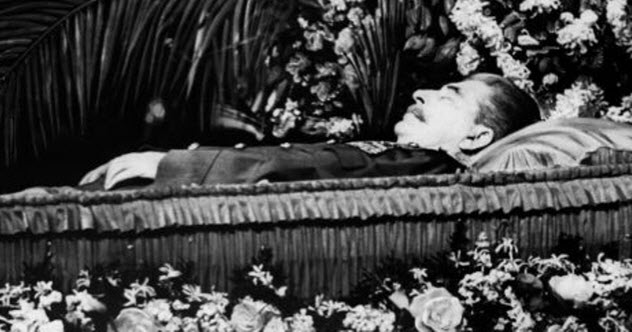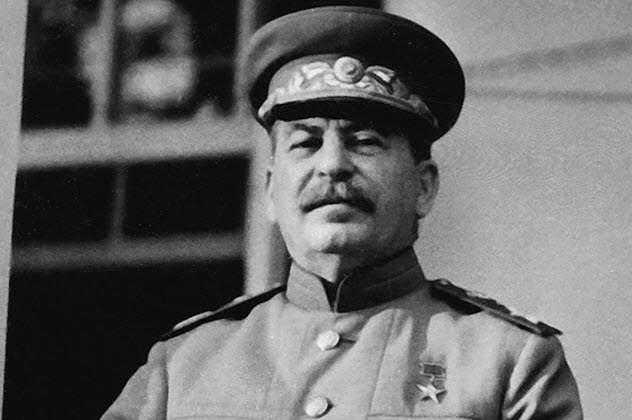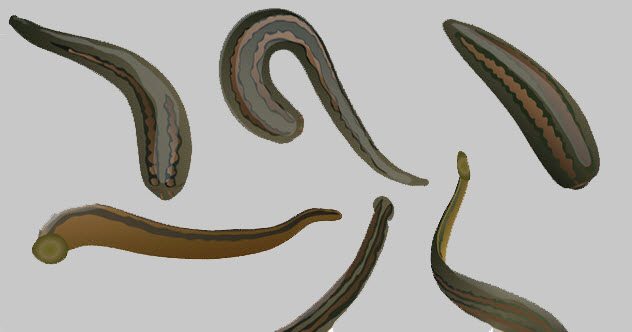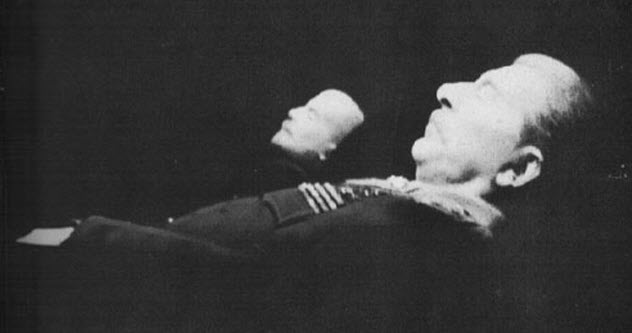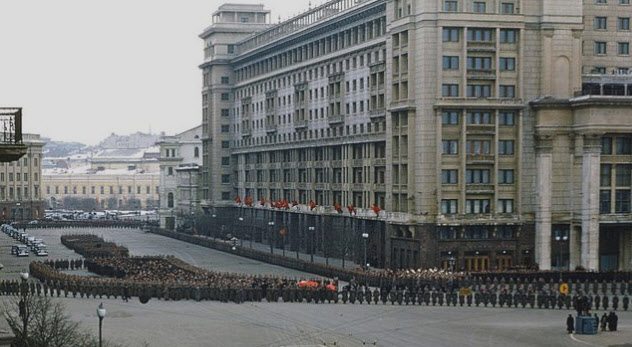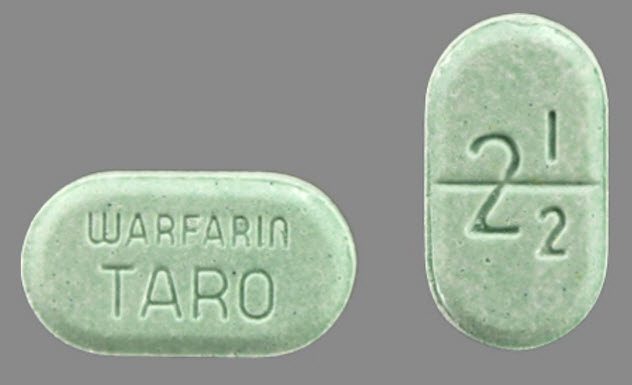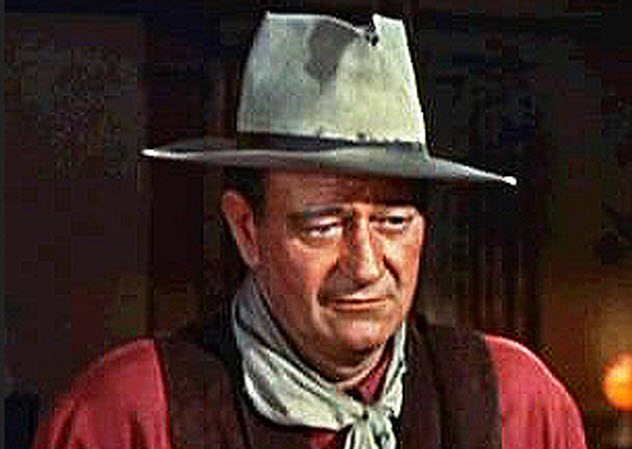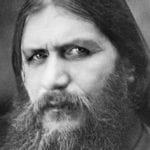For over 60 years, massive speculation has surrounded his unexpected death in March 1953. The following list delves into the suspicious oddities about Stalin’s demise while examining the dictator’s deteriorating mental health as well as the absurd chaos surrounding his funeral.
10 Declining Health
In the years leading up to Joseph Stalin’s death on March 5, 1953, the dictator was becoming increasingly paranoid. He believed that all those around him were conspiring against him. His temperament was as unpredictable as it was horrifying. On one occasion, Stalin’s physician, Vladimir Vinogradov, sent the dictator into a rage for merely suggesting that he take life a bit easier. By 1952, it was apparent that his health was declining. Yet Stalin would hear none of it and had his doctor placed under arrest. In addition, Stalin ordered the imprisonment and torture of nine other physicians in a purge now known as the Doctors’ Plot. Such rhetoric fueled widespread rumors about a medical conspiracy of “a criminal group of killer doctors” bent on murdering prominent Soviet figures. The fact that six of the nine incarcerated physicians were Jews led to an outbreak of anti-Semitism across the Soviet Union. Weeks before the accused doctors were scheduled for trial—and imminent execution—their lives were spared following their release from prison due to Stalin’s unexpected death.[1]
9 A Charming Farewell Fit For A King
Stalin would undoubtedly roll over in his grave if he knew the unflattering condition in which he was discovered. On the morning that he was found, Stalin’s physicians and fellow revered Communist leaders stood in embarrassment as their dictator lay unconscious on the ground. He was soaked in urine. The stench permeating the room was perhaps as nauseating as the unremitting fear pulsing through their veins as they questioned what measures to take. In an interview years later with Russian journalist Edvard Radzinsky, Peter Lozgachev, the deputy commandant of Kuntsevo who had found Stalin, recounted, “The doctors were all scared stiff. They stared at [Stalin] and shook. They had to examine him, but their hands were too shaky.”[2] When the physicians finally acted, Stalin’s blood pressure was an alarming 210/120, his right arm and leg were paralyzed, and his cherished dentures were almost shattered. After one of the doctors had removed the false teeth, his quivering hands had dropped them on the ground. As we now know, Stalin would not survive to the end of the week. Nevertheless, the mere thought of being responsible for breaking the dictator’s platinum dentures was terrifying to those around him given the death sentence that would inevitably ensue. According to the chief Kremlin dentist, Alexei Doinikov, Stalin had only three of his own teeth on the day he died.
8 No Need To Rush
It took four days after Stalin was found unconscious for him to succumb to his ailments. Throughout that time, he was confined to a couch in apparent agony while those around him delayed treatment. Historians have theorized that the forced industrialization, paranoid purges, and widespread famine undertaken or caused by Stalin were the reasons his party refrained from taking crucial measures to save his life. When his guards did call for help, they contacted the minister of state security instead of a doctor. Even then, Stalin’s closest allies and confidants delayed acting to ensure his demise and spare them from inclusion in the forthcoming purge. After all, with Stalin’s recent erratic behavior and unpredictable lunacy, no one was safe under his control. Nearly 12 hours after being notified, the dictator’s fellow Communist leaders and drinking cronies finally called for doctors. In an ironic twist of fate, the best physicians in the Soviet Union who had previously treated Stalin were imprisoned by the madman and thus unable to assist. Representatives were sent to the prisons to seek advice and potential diagnoses from the tortured, incarcerated doctors whom Stalin vehemently distrusted.[3]
7 Leeches, Injections, And Nutritional Enemas
Leeches were used extensively in medicine in the 18th and 19th centuries to supposedly reduce the patient’s blood pressure via the drawing of his blood. This practice was used on Stalin’s head as a final effort to revive him while he lay on his deathbed. In addition, camphor was massaged on the dictator’s back as if bedsores were a prime concern given the situation. When these actions did not improve the paralyzed leader’s predicament, enemas were administered in a moronic attempt to “nourish” the patient. Twice a day, Stalin was given a glucose enema as well as a “nutritional enema” that contained cream and an egg yolk.[4] When Stalin showed no signs of improvement, the doctors resorted to using cold compresses, artificial respiration, and multiple injections of adrenaline on their leader. At one point, Stalin’s son, Vasili, protested his father’s treatment by shouting, “You bastards, you’re killing my father.” Stalin’s daughter, Svetlana Alliluyeva, recounted her father’s last moments. “He suddenly opened his eyes and looked at everyone in the room,” she said. “It was a terrible gaze, mad or maybe furious and full of fear of death.” When Stalin finally took his last breath, everyone present knelt down and kissed his hand except for Lavrenti Beria, the chief of secret police, who was said to have spat on the body.
6 Trial And Error
When Vladimir Lenin died in January 1924, Stalin was vocal about wanting the corpse embalmed for public display despite the majority of Soviet leaders opposing the idea. While many Soviets argued for a traditional burial in a closed tomb, they eventually agreed to a microinjection embalming technique that was still experimental at the time. It came as no surprise that Stalin wished for the same procedure and shrine-like entombment following his own death. However, there were numerous difficulties with it by then. At the time of Stalin’s passing, Professor Vorobyev, who had perfected the science while embalming Lenin, had already died. Thus, the rigorous and unappetizing task went to Professor Vorobyev’s assistant, Professor Zharsky. It had become increasingly apparent that the dictator’s embalming was not planned properly given that his body was only prepared for a three-day public display as opposed to the generations of viewing for his predecessor.[5] Due to this mishap, Stalin’s corpse was rushed back to the morgue once he began to ripen. His remains underwent trial-and-error embalming techniques to ensure that it was prepared for the long haul. In the end, Stalin’s glowing, rejuvenated look took seven months to complete. His body was placed inside the glass tomb beside Lenin, but it was removed yet again in the coming years.
5 Halloween Eviction
In the struggle to succeed Stalin, Nikita Khrushchev became the head of the Soviet government. In his first decade after gaining power, Khrushchev was determined to enact a policy of de-Stalinization to distance himself from his predecessor’s horrifying reign. Given his awareness that Stalin’s incomprehensible brutality had claimed the lives of an estimated 20 million Soviet citizens, Khrushchev believed that the ruthless dictator did not deserve a place beside Lenin in the mausoleum. As a result, eight years after being embalmed and entombed in an elegant glass enclosure for all to see, Stalin’s remains were removed from the mausoleum in Red Square and buried inconspicuously near the Kremlin Wall.[6] In a fitting end, Stalin lost the honor and prestige that he had believed was his due. Instead of resting beside his hero Lenin, Stalin was positioned beside lesser figures from the Russian Revolution. Coincidentally, the day of Stalin’s tomb eviction eerily fell on Halloween 1961.
4 A Sick Man
In recent years, more insight into Stalin’s mindset and irrefutable lunacy has become the topic of discussion in the medical field due to diary excerpts from the dictator’s personal physician, Alexander Myasnikov. Once thought to be forever lost, Myasnikov’s journal entries about Stalin’s health and autopsy had been hidden since 1953—until his family recovered them from the state archives. Interestingly enough, Myasnikov does not mince words when acknowledging his belief that the dictator had a mental illness. However, the cause of such madness was quite surprising. Myasnikov claimed that Stalin’s insanity stemmed from his advanced cerebral atherosclerosis, the hardening of the arteries in the brain. According to Myasnikov, this degenerative brain illness affected Stalin’s decision-making and contributed to his paranoia and increasing ruthlessness throughout the years. One excerpt from Myasnikov’s diary states: The major atherosclerosis in the brain, which we found at the autopsy, should raise the question of how much this illness—which had clearly been developing over a number of years—affected Stalin’s health, his character and his actions. [ . . . ] Stalin may have lost his sense of good and bad, healthy and dangerous, permissible and impermissible, friend and enemy. Character traits can become exaggerated, so that a suspicious person becomes paranoid. [ . . . ] I would suggest that the cruelty and suspicion of Stalin, his fear of enemies . . . was created to a large extent by atherosclerosis of the cerebral arteries. The country was being run, in effect, by a sick man.[7]
3 Horror Even In Death
After decades of living with a fallacious belief that Stalin sheltered and cared for the Soviet people, citizens sincerely wept tears of grief following his death while questioning the future of their country without their leader. The excessive public display of mourning was evident when tens of thousands of people gathered in Trubnaia Square for his funeral. To catch a glimpse of the dictator’s corpse, the eager crowd rapidly formed into a monstrous whirlpool and chaos erupted. In an ironic twist of fate, Stalin continued to bring terror to the streets of the Soviet Union as inconsolable human bereavement hastily changed into a bitter fight to the death. Despairing screams became less audible, turning into groans as hundreds were trampled to death. Shorter people in the crowd were smothered while others were crushed against building walls and traffic lights, leaving the streets stained with blood. Of the thousands of people who lined up in the snow to see their leader lie in state in the Hall of Columns, an estimated 500 people lost their lives.[8]
2 Conspiracies
Mystery continues to swirl around Stalin’s death despite evidence detailing his deteriorating health. For years, historians have argued the possibility that the Soviet leader’s demise was helped by prolonged poisoning. For example, on the evening of Stalin’s death, he began vomiting blood due to gastrointestinal hemorrhage. The details of his extensive stomach hemorrhaging were only made public in 2011 when the autopsy reports were officially released. As a result, speculation has arisen that confidants in Stalin’s inner circle slipped him warfarin, a tasteless, colorless blood thinner.[9] It is believed that the rat poison was administered to him during a final dinner with four members of his Politburo, including his immediate successor, Khrushchev, and the chief of the secret police, Lavrenti Beria. In fact, Beria supposedly bragged about murdering Stalin two months after the dictator’s death: “I did him in! I saved all of you.” It is believed that those who attended Stalin’s final dinner were becoming increasingly fearful of a looming nuclear war with the United States. Thus, these men conspired to gradually poison Stalin over 5–10 days to avert suspicion of foul play.
1 The Duke
Stalin’s death not only spared the millions who were destined to fall under his diabolical regime but also one of Hollywood’s most iconic movie stars. According to biographers, Stalin became progressively angered by Hollywood’s anti-communism stance. So he decided that John Wayne must die. Stalin’s delusional sentiment led to several attempts on the actor’s life. One time, two Soviet hit men posing as federal agents were arrested at Wayne’s office at Warner Brothers Studios in 1951. Nikita Khrushchev stopped the Soviet plot to kill Wayne after Stalin died in 1953.[10] In 1958, Khrushchev explained to the Duke, “That was a decision of Stalin during his last five mad years. When Stalin died, I rescinded that order.” Unlike Stalin, the Duke was revered following his death from cancer in 1979 at age 72. Adam is just a hubcap trying to hold on in the fast lane.

